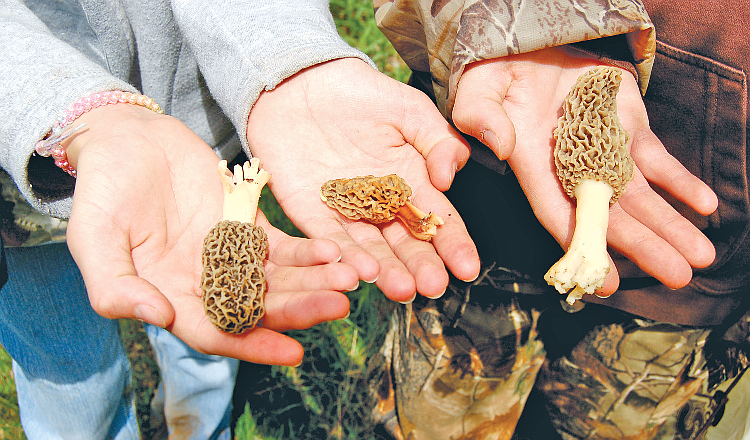Make Foraging Your New Hobby
June 24, 2022 at 12:12 p.m.
Finding wild, edible food near where you live can be fun and challenging, plus add tasty interest to your evening meal.
Learning where to look, when to look, and recognizing the foods that are tasty and safe to eat takes practice.
Practice plus frequent use of reference materials until you develop your own foraging skills.
Food that you harvest yourself will taste better because of its freshness and organic origins.
Plan Your Outings: Deciding what might be ready to harvest on a given day and where you might find it takes some research. Fruits, berries, mushrooms or nuts all have an ideal, relatively short time to harvest them when they ripen.
Use reference books or numerous internet sources to identify your chosen foraging target in an area you intend to search. References should identify when specific fruits or vegetables should be ripe, give you some tips on the habitat where they may be found,
and provide photos or sketches to help you accurately identify your target. I like to bring Northwest Foraging written by David Benoliel with me, both because it’s helpful and that it is waterproof.
Multiple Foraging Targets: Reference guides will alert you to numerous wild edibles that might ripen around the same time. Even if your primary target is wild asparagus, keep your eyes open for morel, wild onion, blue camas, salmonberry and others. As you learn to identify new edible plants and their locations, your outings become more productive and interesting. I have one favorite two-mile wetland walk near home where I have identified 28 separate edibles that can be found there, many ripening at the same time.
Foraging targets might later expand to gathering other edible food such as clams, oysters, etc. and/or you may decide to plant a garden to supplement foraging items you have difficulty locating.
Remember Safety: If your outing involves wetland or woodland walks, prepare accordingly. I will usually carry a backpack, a first aid kit, insect spray, sunscreen, water, snacks, compass, matches, knife, reference material and plastic bags.
Share Your Bounty: I have found a variety of fruit trees that produce more than enough for my needs. Extra picking helps others that could use some too. Food banks are happy to receive contributions and even give you donation slips to help with your taxes.
Occasionally we host a party featuring some special find that we have brought home fresh. Some of your friends might reciprocate with their own parties or may even ask to join you in future outings.
Try Some New Recipes: Once you become proficient at locating a specific food source, preparing it with new recipes can provide more incentive to harvest. YouTube is a great source to research new preparation ideas, or just use cookbooks. When I harvest a quantity
of morel mushrooms, I dry them for later use in side dishes, flavoring for soups, stews, pastas and omelets.
Getting Outdoors: Foraging is simply a great excuse for getting outdoors. It will give your eyes a break from computer and television screens while you enjoy fresh air. Nature is better appreciated outside where a new wildflower might surprise you. Bird and animal sightings add excitement to your trip.
The exercise is helpful, but it is that quest for, and savoring of, a basket full of fresh food that is likely to make you an avid forager.
Go out there and give it a try. Let me know how you did.
“Rogers Outdoor Channel” is the place to learn about the adventures of Northwest Outdoor Enthusiast Roger Urbaniak along with his lovely wife Linda and trusty pooch Sparky. Visit rogersoutdoorchannel.com/ for more information or email Roger at admin@rogersoutdoorchannel.com.





